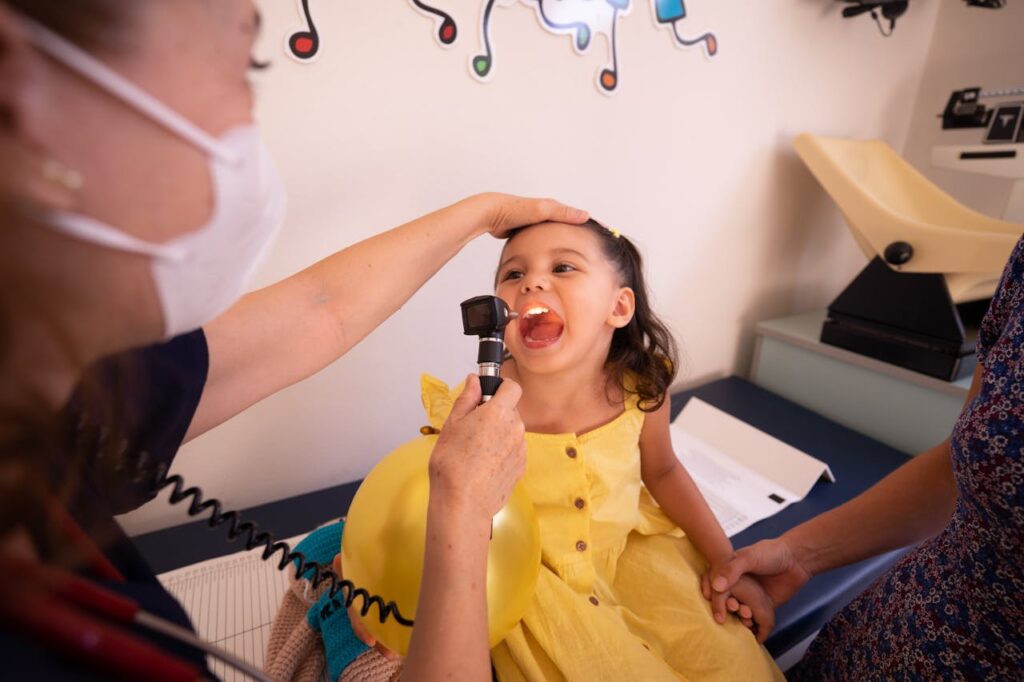By Bill Thomas | September 22
Being diagnosed with pediatric cancer is a life-changing experience in more ways than one. The lived experiences of children and young adults who have struggled with cancer often reverberate far into adulthood, affecting not just their health but also the way they live their lives and how they see the world.
Whenever a child receives a cancer diagnosis, the immediate concern is “What can we do to help them overcome their disease? What treatments are available? How can we best ensure that they are cured?” Even when cancerous cells have been seemingly eradicated from the body, though, the journey is not yet over. What comes next?
Here at Pediatric Cancer Research Foundation, we know how deeply childhood cancer impacts those who have experienced it firsthand. That’s why one of our key institutional priorities is supporting survivors so that they can achieve their full potential and enjoy happy, healthy, productive futures for many years to come.
To help you better understand what life after childhood cancer is really like, we decided to put together this helpful guide. Below, you’ll find information on the short and long-term side effects of childhood cancer and its treatments, what follow-up care for childhood cancer looks like, the emotional and mental health impacts of childhood cancer, and more. Our hope is that this knowledge will help friends and family members of pediatric cancer patients prepare for the long road ahead, while also illustrating just how important it is to support pediatric cancer survivors.

In Remission vs. Cancer-Free
First, we need to examine what we mean when we talk about “life after pediatric cancer.” When exactly can a pediatric cancer patient be said to have truly, definitively overcome their disease? To answer this, we need to understand the difference between a patient who is in remission and a patient who has been cured.
When a cancer is in remission, that means it is no longer detectable and that the symptoms have been either fully alleviated or significantly improved. Cancer cells may still exist within the body, but they are no longer growing or spreading. Remission can be either partial (wherein cancer cells are still present but at a reduced capacity) or complete (wherein all signs of the disease have disappeared), but ultimately it is considered a temporary state potentially lasting weeks, months, or even years.
When a cancer is cured, that means the cancer has been completely eliminated from the body, with no evidence that any cancerous cells remain whatsoever. In contrast to remission, being cured is considered a permanent state, one in which it is unlikely that the cancer will ever recur.
So, how can we truly be certain a cancer is cured and not just in remission?
The truth is we can’t, at least not with the current techniques we have for detecting cancer cells. Often, when we refer to a patient as “cured” or “cancer-free,” what we really mean is that the patient has been in remission with no evidence of disease for five years or more. This is because cancer recurrence after five years is extremely improbable, but that doesn’t mean it is impossible.
As a result, one of the very first things childhood cancer survivors learn is the importance of vigilance and the necessity of follow-up care.
Follow-Up Care
Once a pediatric cancer patient has gone into remission, he or she can begin the process of rebuilding their strength and returning their life to a routine more in line with the one they enjoyed before their diagnosis. In addition to the debilitating side effects of the cancer itself, treatments for pediatric cancer such as chemotherapy and radiation therapy can take a heavy toll on a patient’s physical well-being. Follow-up care, including rehabilitative physical therapy, is often essential to helping a patient bounce back from the ordeal.
During follow-up care, the patient’s health will be closely monitored to ensure that any signs of recurrent cancer are detected and addressed immediately. As time goes on, the frequency with which a patient needs to be monitored for recurrence will gradually decrease; as noted above, after five years with no evidence of disease, most patients are considered cancer-free.
Even still, it is important for childhood cancer survivors to be mindful of any cancer-related symptoms they might experience throughout their lives. Regular check-ups are crucial both for maintaining good general health and for catching recurrent or secondary cancers early.
Of course, recurrent and secondary cancers aren’t the only conditions that can impact a patient’s life after childhood cancer. Coordinated follow-up care may also be required to help a pediatric cancer survivor deal with various short and long-term side effects. These short and long-term side effects can impact both physical health and mental health, and they may be a direct consequence of the cancer itself or a secondary effect of intensive therapy.

Short and Long-Term Side Effects
Depending on the location of a patient’s tumors, pediatric cancers can have a wide range of side effects. This is especially true because of how vulnerable the developing bodies of children are. For example, a child with a pediatric brain tumor may have difficulties with coordination, focus, emotional regulation, speech, memory, or cognition. A child with a pediatric optic tumor may have impaired vision, while a child with a pediatric bone tumor may experience stiffness, swelling, joint pain, or delayed growth.
In some cases, these symptoms cease when the child’s cancer goes into remission. In other cases, though, there may be permanent physiological or neurological damage whose effects last into adulthood.
According to a study by researchers at the Dana-Farber Cancer Institute recently published in the Journal of Clinical Oncology, more than a quarter of surveyed cancer survivors had a physical disability that impaired their mobility and almost 10% had a disability affecting self-care. If these findings are extended to the roughly 18.1 million cancer survivors in the United States today, then more than 5 million survivors would be estimated to have a mobility disability and 1.3 million would be estimated to have a self-care disability.
It’s important to note that not all negative side effects of childhood cancer are a direct result of the cancers themselves. More intensive therapies like chemo, radiation, and surgery can also have far-reaching effects, including abnormal bone growth, hypothyroidism, heart, lung, liver, and kidney disease, and even infertility.
According to the National Cancer Institute’s Childhood Cancer Survivor Study, as pediatric cancer survivors age they demonstrate an elevated risk of morbidity and mortality when compared to a control group comprising siblings who were never diagnosed with cancer. Notably, the study found that as the cumulative dose and frequency of therapeutic radiation has decreased over time, survivors have experienced fewer negative long-term side effects and an overall improved quality of life.
While breakthroughs in targeted immunotherapy are helping to reduce modern-day oncology’s reliance on chemo and radiation therapies, some side effects experienced by pediatric cancer survivors aren’t physical at all.
Mental Health Conditions
It’s no secret that being diagnosed with a pediatric cancer is a stressful situation for everyone involved. This stress can be amplified by social stigmas surrounding children and young adults with cancers, as well as by the physical and emotional toll of intensive cancer treatments.
According to research published by the Journal of the American Medical Association (JAMA), depression rates among childhood cancer survivors reach as high as 40.8%, significantly more than the national average. Likewise, a study published in the Journal of Pediatric Psychology found that nearly 75% of children diagnosed with cancers experienced symptoms of post-traumatic stress disorder either during or after treatment.
Unfortunately, the negative mental health impacts of pediatric cancer don’t always fade once the patient has gone into remission. In another study published in JAMA, analysis of more than 20,000 childhood cancer survivors confirmed a lifelong elevated risk of a broad range of mental health conditions, including depression, anxiety, and schizophrenia.
Some mental health conditions may be caused or exacerbated by the effects of tumors or intensive cancer therapies on the developing brain. Just as often, though, these conditions are the result of trauma, feelings of isolation, disruptions in social development, and the ever-present fear of recurrent and secondary cancers.

Recurrent and Secondary Cancers
The first five years of a pediatric cancer patient’s remission are the most critical. In most cases, if there is going to be a recurrence, it will be during this period. To ensure a patient has the best chance of remaining cancer-free, healthcare professionals will typically create a comprehensive, multi-year health and wellness plan comprising rehabilitative therapy, nutritional guidelines, and regular cancer screenings.
As noted earlier, cancer recurrences are less likely to happen if a patient has been cancer-free for five years, but that doesn’t mean there aren’t still rare cases that buck that trend. In particular, certain types of brain and breast cancers have a higher rate of late recurrence.
That said, as childhood cancer survivors age into adulthood, a more pressing concern is the development of a secondary cancer. A “secondary cancer” is a different cancer that occurs at least two months after successful treatment of the first cancer has completed. According to data cited by the American Society of Clinical Oncology, the risk of secondary cancer development is 3-6 times higher in childhood cancer survivors, with that risk further increasing as survivors age.
There are several factors that can contribute to the elevated risk of secondary cancers, including the type of primary cancer, lifestyle habits, and, in some cases, genetic predispositions to cancers. Additionally, certain types of chemotherapy and radiation therapy can damage patients’ DNA when administered in high dosages, increasing their future susceptibility to secondary cancers.
How We Support Pediatric Cancer Survivors
From mental health struggles to recurrent and secondary cancers to long-term side effects of intensive therapy, life after childhood cancer is often a long and winding path, with no shortage of pitfalls along the way. Things are getting better, though.
Since 1982, Pediatric Cancer Research Foundation has dedicated itself to helping pediatric cancer patients and survivors, both through direct support initiatives and by powering research into more effective, less toxic treatment options, such as the potential use of CAR T-cell therapy for diffuse intrinsic pontine glioma (DIPG), a rare and aggressive form of brain cancer. Our Survivor Scholarship Award, meanwhile, has enabled more than 500 childhood cancer survivors to pursue their academic ambitions by helping to finance their undergraduate and post-graduate studies.
These are just some of the ways Pediatric Cancer Research Foundation upholds its commitment to supporting survivorship and mental health. We also fund research to prevent long-term health complications, invest in psychosocial programs to support survivors and their families, and champion innovative solutions like AI-driven predictive models that help oncologists tailor treatments with fewer lifelong side effects.
If you would like to help us continue supporting childhood cancer survivors, please consider becoming a donor. Together, we can help children affected by cancer walk that long and winding path and achieve the happy, healthy, and productive futures they deserve.
To stay up-to-date with all the latest news shaping the future of pediatric cancer treatment, don’t forget to follow Pediatric Cancer Research Foundation’s Profectus Blog!

